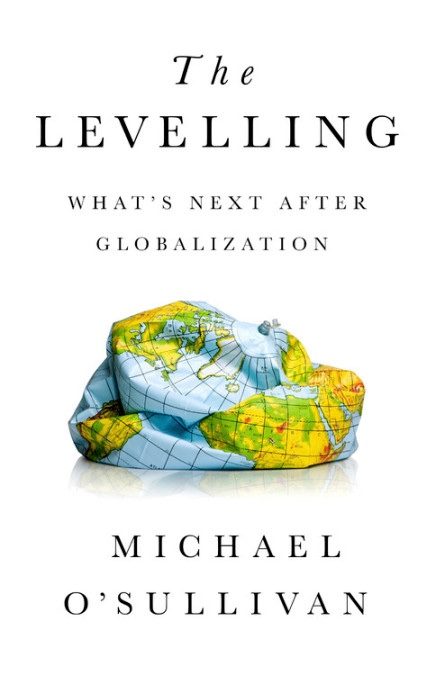
The middle of the 17th century was an extraordinary period, especially for political and institutional innovation. The Treaty of Westphalia in 1648 gave us the nation-state, books like Hobbes’ ‘Leviathan’ were produced and in England the first expressions of popular constitutional democracy were aired. The tumult of the period was dampened with the return of King Charles II to England, in what was called ‘The Restoration’, which is a phrase that comes to mind when I think of Joe Biden’s Presidential hopes.
To start with, I won’t try to map the US in 2020 on to Europe in the late 17th century, save to say that both periods are marked by a sense of a ‘world turned upside down’.
However, the notion of an American Restoration is appealing in the sense that a Joe Biden Presidency would restore the thread of Democratic policy (through Obama to Bill Clinton), and very importantly would restore the competent workings and full staffing of institutions like the State Department. The idea is that the American machine of state (I wrote about the French one last week) would once again purr into action, and American credibility would be restored. The question for Biden, the Democrats and America, is whether he can accomplish more than ‘a Restoration’.
With Biden now well ahead of the President in most opinion polls on national and state by state levels, and Donald Trump sacking his campaign manager last week, the prospect of a Biden Presidency is now very real, though financial markets it seems are not yet pricing this in.
The success of Biden’s campaign and the tenor of his potential presidency will rest in good part on the extent of the economic damage ahead. If high unemployment and bankruptcies are a reality into the presidential debates in September and October, the tone of policy will tilt much more towards social justice (a topic where both Bernie Sanders and Elizabeth Warren are very comfortable).
A Biden White House would likely focus much of its stimulus effort on infrastructure, particularly so in the ‘green’ economy. What is much less clear is the extent to which they would consider rejigging the tax system to place a greater tax burden on wealthier Americans and corporations. This may well be teased out in coming months. I also expect that foreign policy under Biden will be much more assertive, especially so towards Russia and China.
Biden’s next step is to choose a running mate. My judgement is that Biden will choose Kamala Harris as his VP, not least because she has a track record in policing and justice, which is one policy area which the Trump campaign is likely to amplify. Other VP candidates like Susan Rice may suffer from the fact that the Biden team already has a very well stocked foreign policy and security bench.
For his part (and provided he doesn’t drop out of the race!) Donald Trump will inevitably contest the election in a divisive way. Trump’s key weapon over Biden is his social media and network TV reach, and here he can do plenty of damage (to himself also).
There is plenty that he can agitate on – such as contesting the logistics of the election (i.e. postal voting), to stoking tension of topics that resonate with some voters – China, defunding police forces and the prospect of more economic stimulus. He may even claim credit for a COVID-19 vaccine, should it materialize before November.
However, such an approach may not win him a second term as it may merely serve to reinforce the views of the 40% of Americans who think ‘he is doing a good job’. Moreover, with a record number of women now contesting elections for Congress, and more states reacting in a constructive way to racial and other inequalities, the broad socio-political tide may be turning against Trump.
It is now widely recognized that Trump has vastly diminished America – it is financially weaker, its soft power is squandered and its institutions are less admired. He may now also wreck the Republican Party.
Should the Democrats take control of the Senate, it is not impossible that the rump of the Republican Party might split into those who share Trump’s political convictions, and those for whom he was a convenient political force. The ‘convictionists’ could form a harder right wing party, while the ‘conventionists’ might repent and try to rejoin the mainstream in the fashion of the country club Republicans of the Reagan era, led potentially by someone like Liz Cheney.
For their part, the dilemma is what tone to strike across states so that they take back the Senate. A mild ‘re-unite’ America approach is the most likely one, at the expense of the muzzling of the likes of Bernie Sanders. Once in power, the Democrats will be more interesting in that they feel more comfortable following the tack of the likes of Elizabeth Warren, and more emboldened in reinforcing regulation in areas like corporate governance and environmental protection.
A scenario that (according to polls today) brings about an end of Trump politically, cripples the Republican Party and reinstates the Democrats may well restore stability to America, but my worry is that it won’t change it, and much less so may postpone some of the radical policy that is needed to truly revitalize America.
The manifest social tensions, political stasis, and extremes in wealth/inequality as well as declines in human development indicators point to the need for more than a simple restoration.
Have a great week ahead,
Mike
